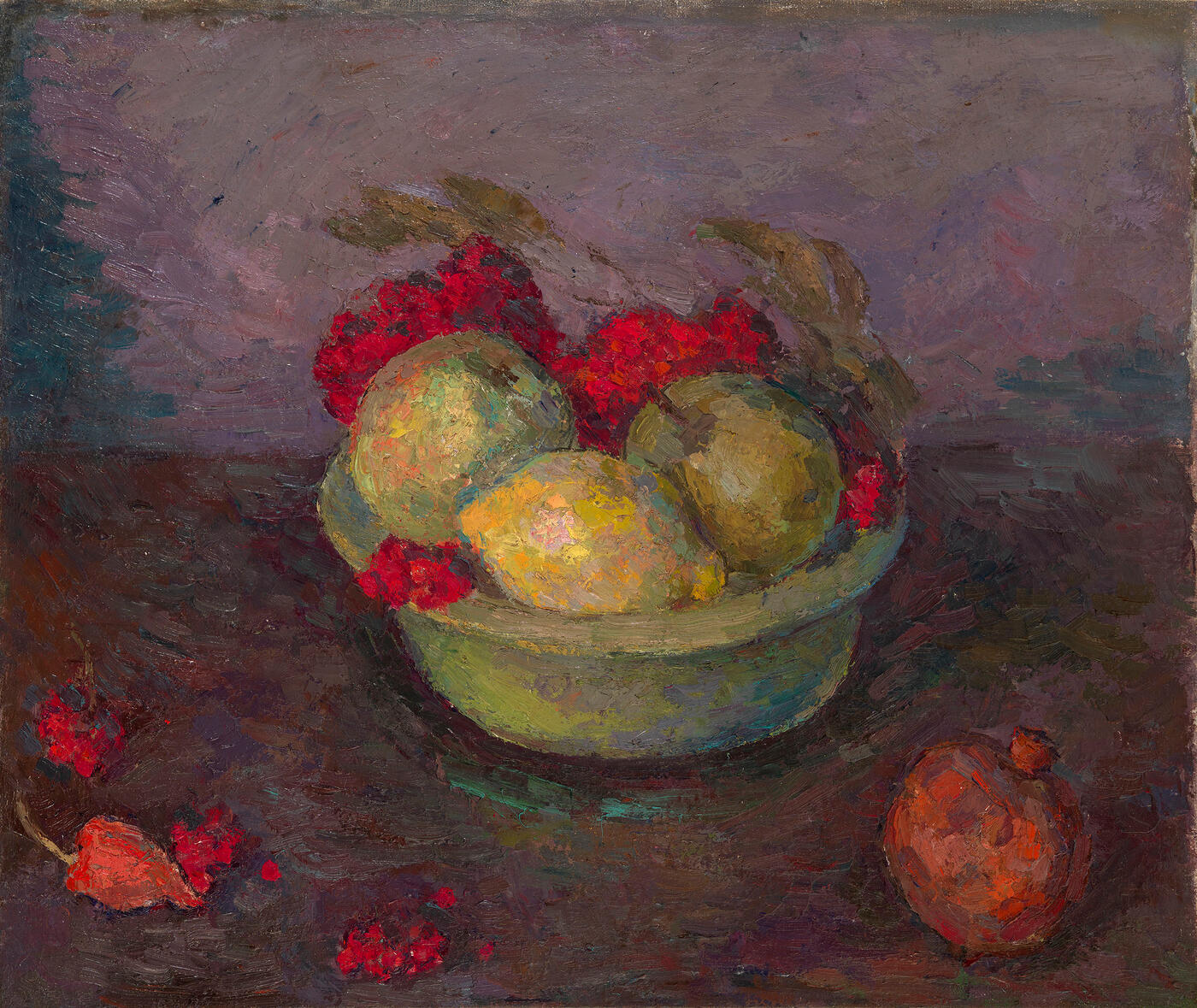MacDougall's Russian Art Auctions 27-30 May 2012
27 May 2012

* 41. FALK, ROBERT (1886-1958)
Still Life with Rowan Berries and Fruit, numbered "89" and bearing a label inscribed in Cyrillic and signed by A. Shchekin-Krotova, the artist's wife, on the stretcher.
Oil on canvas, 54 by 64 cm.
220,000–400,000 GBP
Painted in 1945.
Provenance: Private collection, Europe.
Authenticity of the work has been confirmed by the expert I. Geraschenko.
Literature: D. Sarabianov, Yu. Didenko, Zhivopis’ Roberta Fal’ka. Polnyi katalog proizvedenii, Moscow,
Elizium, 2006, p. 697, No. 1032, illustrated in black and white.
With its understated beauty and elegant simplicity, Still Life with Rowan Berries and Fruit is painted with the quiet authority of a master artist. This work dates from a time when both Falk’s artistic career and his personal life were in turbulence. After the decade of self-imposed exile in Paris and war-time evacuation to Central Asia, the artist was at a remove from the official artistic life of his homeland. The innovation and influence of European art, which had been so prevalent at the beginning of his career, had been smothered by
Socialist Realism and the surge of totalitarianism. No longer held in the same regard by the authorities, the “Russian Cézanne” was at best viewed with suspicion, and having suffered the loss of his beloved son, Valery, threw himself into his work and teaching.
Still lifes had always been a mainstay of Falk’s oeuvre, but these later works are characterised by their thick, heavily impastoed paint layer as the artist returned over and over again to the same canvasses, endlessly reworking them. In the absence of any major official
commissions he was by now mainly painting for himself and many works of this period can be considered intellectual exercises as well as cathartic. Returning to ideas which had preoccupied him since his youth, the influence of both Cézannism and Cubism is still present. Drama is created by the contrast and interplay between the bright red berries and the dense, murky space which they inhabit and the independence of each object from the collective whole is emphasised by the ambiguity of the space and the slightly flattened perspective.
However there is nothing cold and academic about this work. The quiet, calm melancholia, which had always been Falk’s artistic calling card, is present everywhere: it is discernible in his palette, in the fruit which is beginning to dry and shrivel and in the shadows, but not once does it detract from the overall beauty of the work, in fact it is in this disarming honesty of emotion that the beauty of Falk’s oeuvre lies.
Notes on symbols:
* Indicates 5% Import Duty Charge applies.
Ω Indicates 20% Import Duty Charge applies.
§ Indicates Artist's Resale Right applies.
† Indicates Standard VAT scheme applies, and the rate of 20% VAT will be charged on both hammer price and premium.